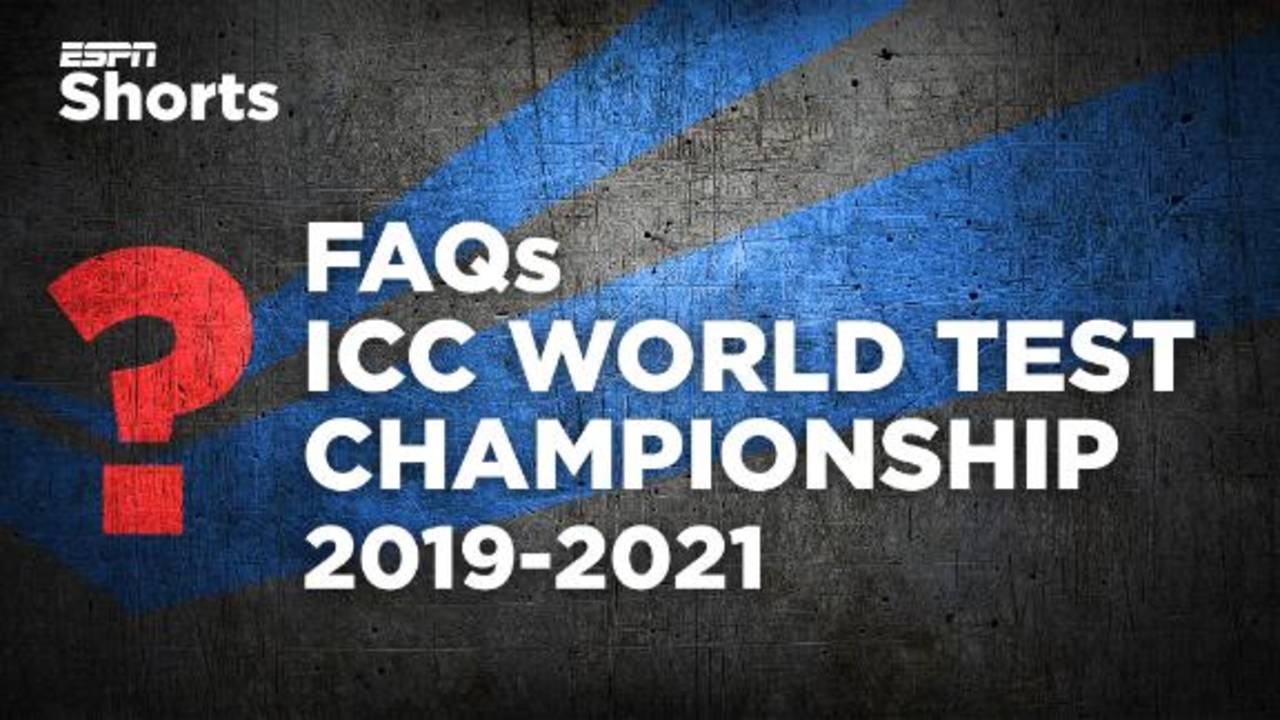The Test championship points system might be flawed, but it's the best we have
There are issues with a win in one Test being worth 60 points and one in another just 24
Andrew Fidel Fernando
23-Oct-2019
For many who followed the Ashes closely, it was one of the best of all time. It featured a heart-stopping finish at Headingley on the back of Ben Stokes' majestic innings. There was also Steven Smith's sublime series-long form, and Jofra Archer's electric arrival at Lord's. That both teams won two Tests each only added to the blockbuster quality of the series.
But hang on, what's this? By the end of this epic tilt, England and Australia were only each awarded 56 World Test Championship (WTC) points. That's less than the 60 points Sri Lanka and New Zealand got for playing a two-match series, winning one game apiece.
Is the system rigged? Surely there has got to be a fairer way.
If you are not yet familiar with the WTC, let's quickly run through how it works. Each team plays six WTC series in the first cycle, and each of those series has 120 points up for grabs. That pool of points for each series is divided by the number of matches scheduled. If a series comprises four matches, for instance, each game is worth 30 points. In a two-game series (such as Sri Lanka v New Zealand) meanwhile, each Test is worth 60 points. If a match is drawn, the teams take one third of the points allocated for that Test, which is why the Ashes draw at Lord's yielded each side just eight points. No additional points are awarded for series victories - only the individual Tests score points.
Why has the ICC come up with what at first glance seems an unfair system? Why were Australia and England seemingly made to work so much harder for their points? The answer to both questions is in the Test schedule.
India, England and Australia generally play more Tests than the other six sides in the WTC. From now through next year, for example, England are due to play 10 Tests, while Pakistan have only five on their calendar.
Perhaps more importantly, India, England and Australia play longer series - their contests against one another consist of no fewer than four Tests apiece. Compare this to Sri Lanka and Bangladesh, who have never played a four- or five-match series in their combined 56 years of Test history. Or to New Zealand, for whom four of their six WTC series in the first cycle are two-match affairs only.
New Zealand's situation is especially worth dwelling on here, because Kane Williamson's side is arguably the best that has ever played for that nation (they have gone undefeated in six successive series, winning five of those, including one in the UAE), and yet, they frequently have a sparse winter schedule. Their plight strongly suggests that it is not quality that is the most important determinant of a healthy schedule, it is the size of your cricket economy. New Zealand could conceivably become the top-ranked Test side in the world (they are presently in second position), but so long as New Zealand Tests fail to appeal to broadcasters - largely because of the size of their market, and its awkward time zone - the team is unlikely to play as many Tests as India, and certainly fewer than England.
Most other nations in the WTC do not suffer quite as acutely, but must nevertheless grapple with broadcasters' reluctance to see them play more Tests against sides other than England, India and Australia. For Sri Lanka Cricket, for example, the only lucrative Test tours are home series against India and England (the board just about breaks even on Australia and Pakistan tours). Although South Africa's Test visits have produced some of the most gripping contests of the century, South Africa have not played a three-Test series on the island in 19 years. Very quickly, it becomes clear that the WTC's unusual points scale is a mere symptom of the inequity in the Test ecosystem.
Perhaps there are valid critiques of the championship. Virat Kohli recently called for away victories to be worth more points than home wins - though even that idea is not without serious pitfalls. But unfair as it seems for a victory to be worth 24 points in one series and 60 in another, the points system does also account for the percentage of matches teams fail to win.
If the current imbalance in the number of points awarded does prove too taxing for the bigger teams, perhaps the ICC could set up a fund that assists the poorer nations with the costs of hosting additional Tests. In exchange, it could stipulate that all WTC series must consist of no fewer than three matches, which in turn means that a Test win can yield no more than 40 points. There is actually precedent for such a scheme; in 2016, the smaller seven teams were paid US$1.25 million a year out of a "Test Match Fund", though this was soon rolled back, along with the remainder of the Big Three's 2014 changes.
Ideally, however, the WTC will prove so successful that broadcasters will begin to see more value in Tests between the smaller nine nations. With substantial luck, the future cycles of the championship will organically see more three-match series. But for now, this points system is the best cricket has got. In fact, it should be no surprise that the sport's attempt to level a disparate playing field has produced such a complex device.
Andrew Fidel Fernando is ESPNcricinfo's Sri Lanka correspondent. @afidelf
